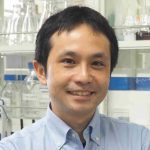Research - A02:Selected Projects (FY2020-FY2021) -
Click here for research plans of Selected Research Projects (2018-2019).
A02:Selected Research Projects (FY2020-FY2021)
Unveiling the developmental principles of plant stem cells by studying the moss, Physcomitrella patens
| PI | Tomomichi Fujita | Graduate School of Science, Hokkaido University |  |
The outwardly growth of protonemal stem cells in mosses allows us to observe them at the unicellular level. Taking advantage of this, we are going to uncover the molecular mechanisms of cell polarity and asymmetric cell division in plant stem cells. To this end, we will study a plant-specific transcription factor that is involved in these developmental processes in the moss apical stem cells. We will also study the mechanism on how the apical stem cells switch between asymmetric and symmetric cell divisions under various challenging environmental conditions. Furthermore, the relationship between cell stemness and plasmodesmata-dependent cell-cell communication will also be explored. Thus our research attempts to tackle the fundamental aspects of stem cell development in plants.
Elucidation of DNA damage and repair in the context of chromatin remodeling in damaged stem cells
| PI | Atsushi Shibata | Gunma University Initiative for Advanced Research, Gunma University |  |
Plant stem cells have a unique genome stability system that maintains their pluripotency. Interestingly, these cells exhibit high sensitivity to DNA damage. The high sensitivity is explained by the notion that damaged stem cells should be effectively excluded from the stem cell population for the maintenance of genome integrity. Recent studies have shown that DNA damage reduces auxin expression, leading to chromatin relaxation in plant stem cells. The chromatin relaxation is considered to be involved in the enhancement of DNA damage in stem cells. However, it is still unknown how chromatin alteration affects DNA damage and repair. In the present study, we aim to reveal the molecular mechanism underlying the enhancement of DNA damage and its repair pathway in the context of chromatin remodeling.
Mechanism that controls stem cell initiation
| PI | Akie Shimotohno | Graduate School of Science, The University of Tokyo |  |
Stem cells reside in specialized microenvironments which enable self-renewal and maintain pluripotency, and play a central role in organogenesis and morphogenesis. Unlike animals, plants have developed sophisticated reprogramming capacity to produce stem cells from fully differentiated cells; however, molecular mechanisms underlying this process are still largely unknown. This study aims to elucidate the regulatory mechanisms of how plants reconstitute stem cells from differentiated cells through precise control of molecular networks in a spatiotemporal manner.
Molecular basis for stemness of the pericycle
| PI | Tatsuo Kakimoto | Graduate School of Science, Osaka University |  |
Lateral roots are produced from pericycle cells, which are located between endodermis and vasculature. In Arabidopsis, xylem-pole pericycle (XPP) cells initiate cell division in response to auxin resulting in production of the lateral root primordium. External application of auxin to a root induces cell division exclusively in XPP. In this project we will carefully rexamine the character of pericycle focusing on cell cycle regulation. Another aim is to identify a regulatory system that govern the stemness of XPP.
Auxin actions in termination of floral stem cell activities
| PI | Toshiro Ito |
Graduate School of Science and Technology, Nara Institute of Science and Technology |
 |
During flower development, the robust stem cell activities are terminated to produce seeds for next generation. We are studying genetic pathways controlling floral meristem determinacy and showing that multiple genes (transcription factors, epigenetic regulators, signaling molecules and auxin-related proteins) are involved in this process in stage- and cell type-specific manners. However, how auxin controls floral meristem determinacy is unknown. We plan to understand the dynamics and functions of auxin in floral meristem determinacy control through molecular genetics and cell biological analyses.
Characterization of internode development and exploration of stem cells in rice stems
| PI | Katsutoshi Tsuda | National Institute of Genetics |  |
Grass species produce the intercalary meristem (IM) at the bottom of internodes. The IM is responsible for rapid stem elongation upon environmental stimuli, and has been a major target in crop breeding to regulate plant height. However, how the IM originates and develops remains largely elusive. Here, we will characterize developing internodes using transcriptome and explore regulatory factors for IM development. We will also examine the origin of the IM cell population and the presence of stem cells in the stem.
